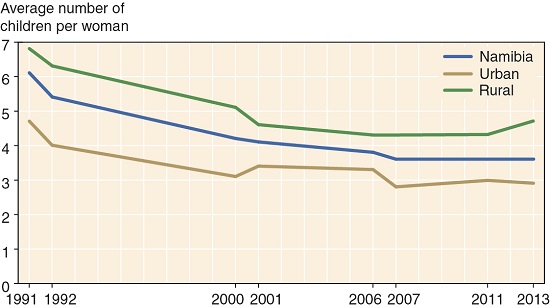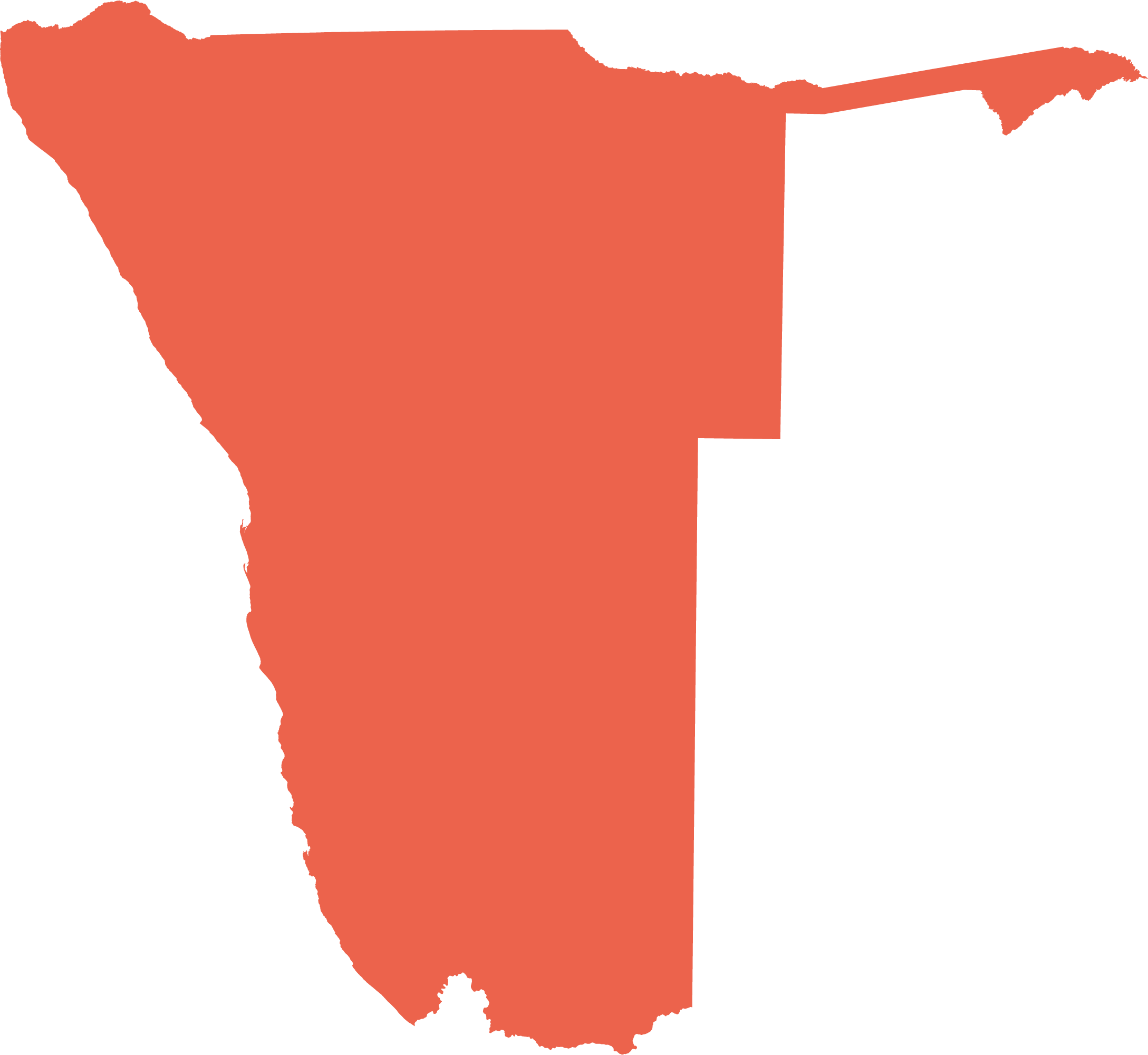9.22 Fertility rates in Namibia, 1991–201338

Fertility rate is the average number of children born to women aged 15–49 years. Rates declined rapidly in the 1990s and levelled out at about 4 children per woman in the country as a whole. The fertility rate in rural settings at 4.5 children was higher than the urban rate of 3 children per woman.
Fertility rates are likely to continue declining as more women are educated to higher levels, gain employment, and adopt urban lifestyles.
9.23 Fertility rates per region in 1991, 2001 and 201139

Fertility rates dropped substantially in all regions between 1991 and 2001. Smaller decreases followed between 2001 and 2011 in most regions. The lowest fertility rates over this period were in Khomas, where urban residents dominate the population. Other regions with low fertility rates were ǁKharas, Hardap and Erongo in southern and central Namibia. The highest fertility rates were in the northern regions, in particular Kunene, Ohangwena, and Kavango East and West for which separate figures are not available. These regions have higher proportions of rural residents than regions in central and southern Namibia (figure 9.18).
9.24 Fertility rate and a mother's education, 201140

On average, the longer a girl remains at school and the higher her level of completed education, the fewer children she will bear. This trend holds true throughout the world. Here in Namibia, fertility rates start to decrease once Grade 4 has been attained, and continue to drop with higher levels of education. The average number of births halves from 5.8 children per female having attained Grade 4 to 2.9 children per female having attained Grade 12.

Photo: Ankerkraut (https://www.flickr.com)
The substantial reduction in fertility rates in Namibia is associated with several factors: increasing levels of education of women, increased urbanisation where women are more frequently employed rather than being homemakers, and less risky sexual behaviour as a result of high HIV infection rates that peaked in the early 2000s (figure 9.31).

